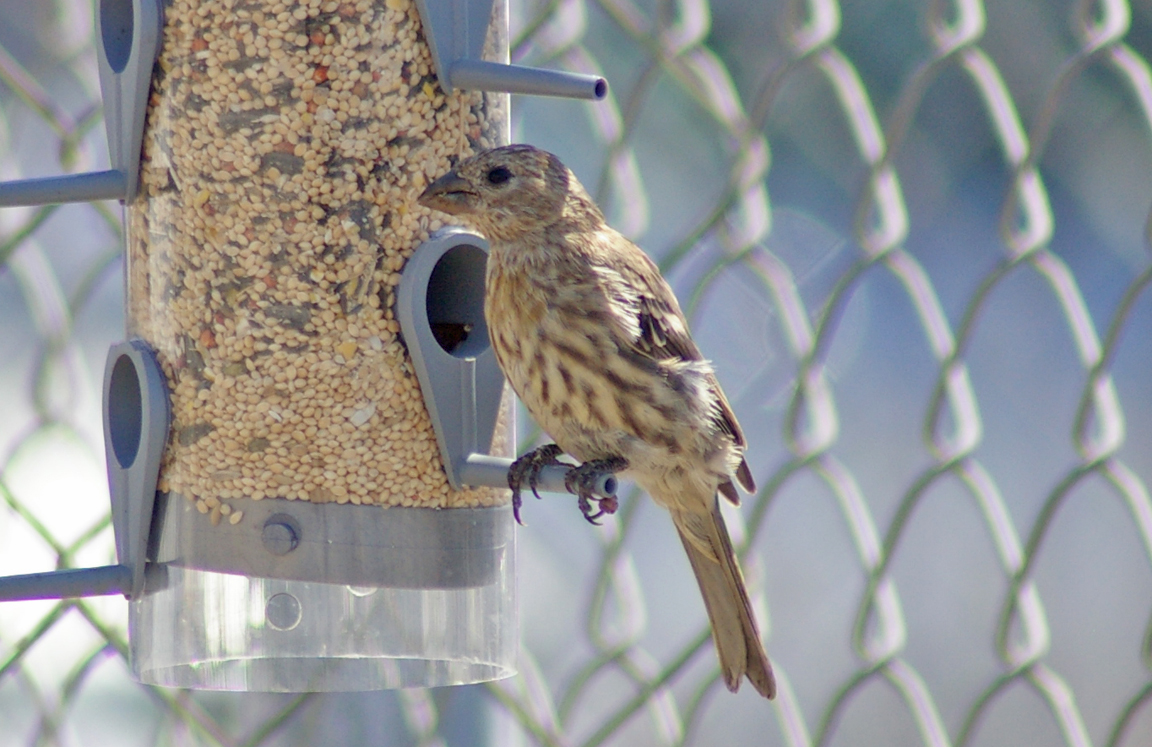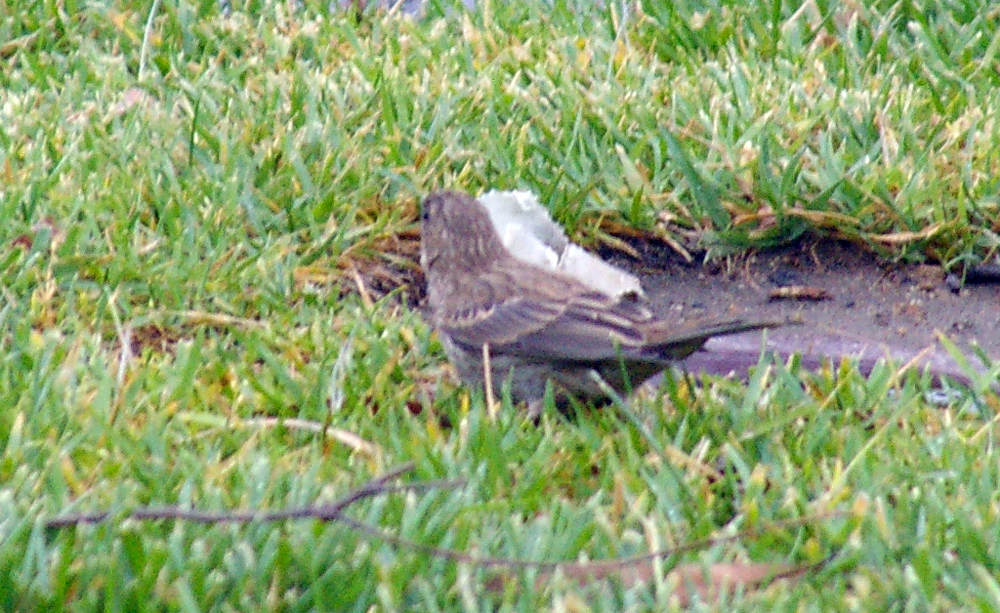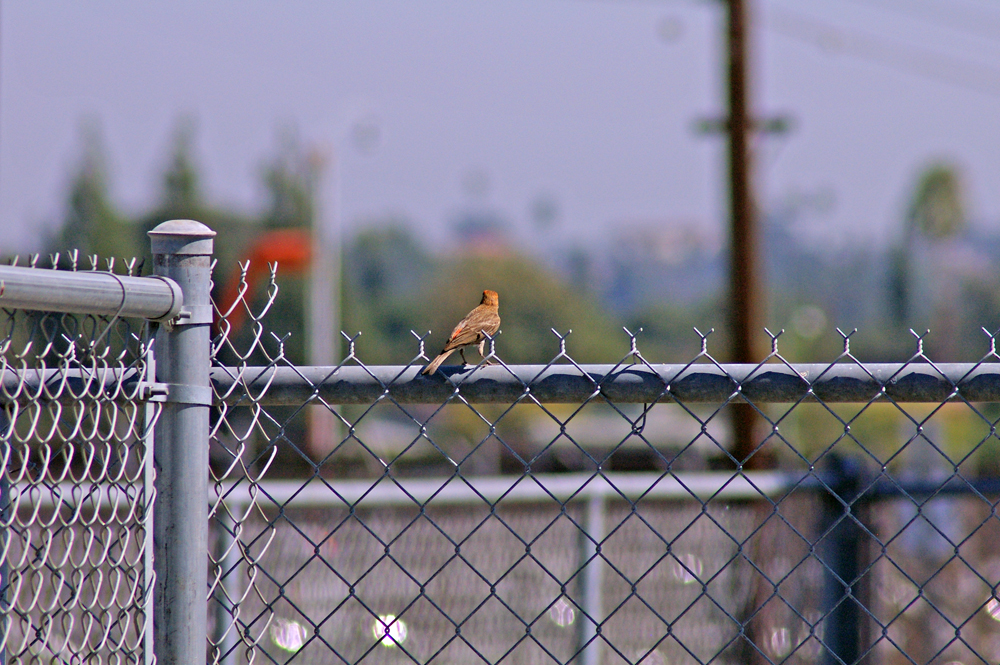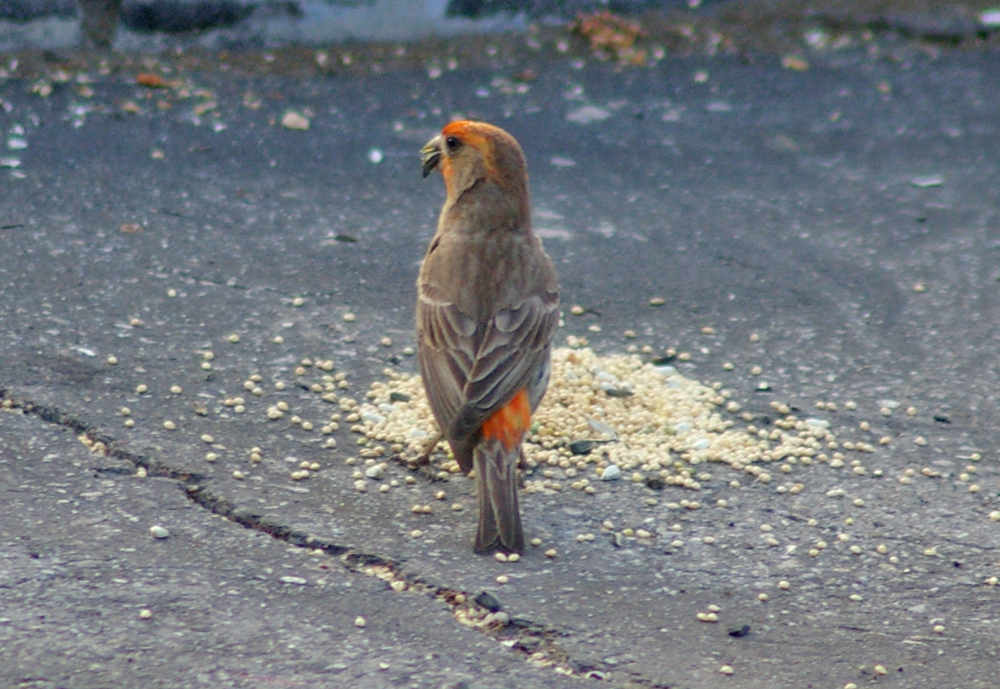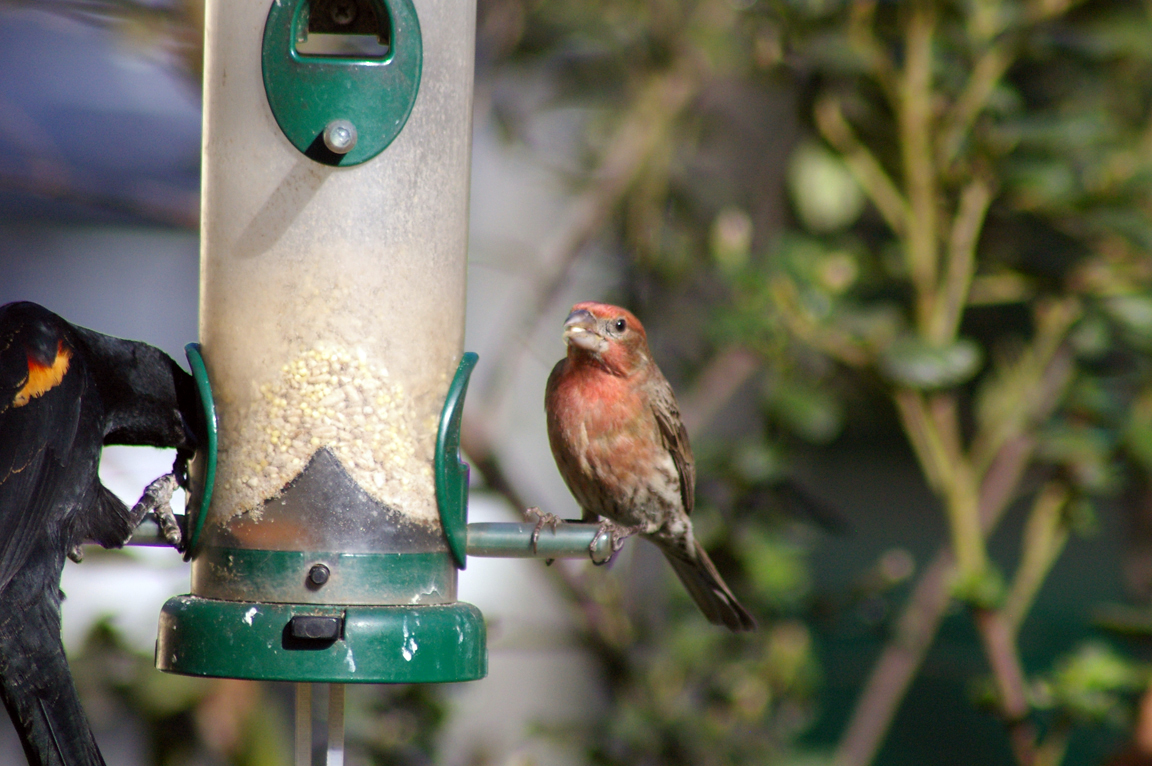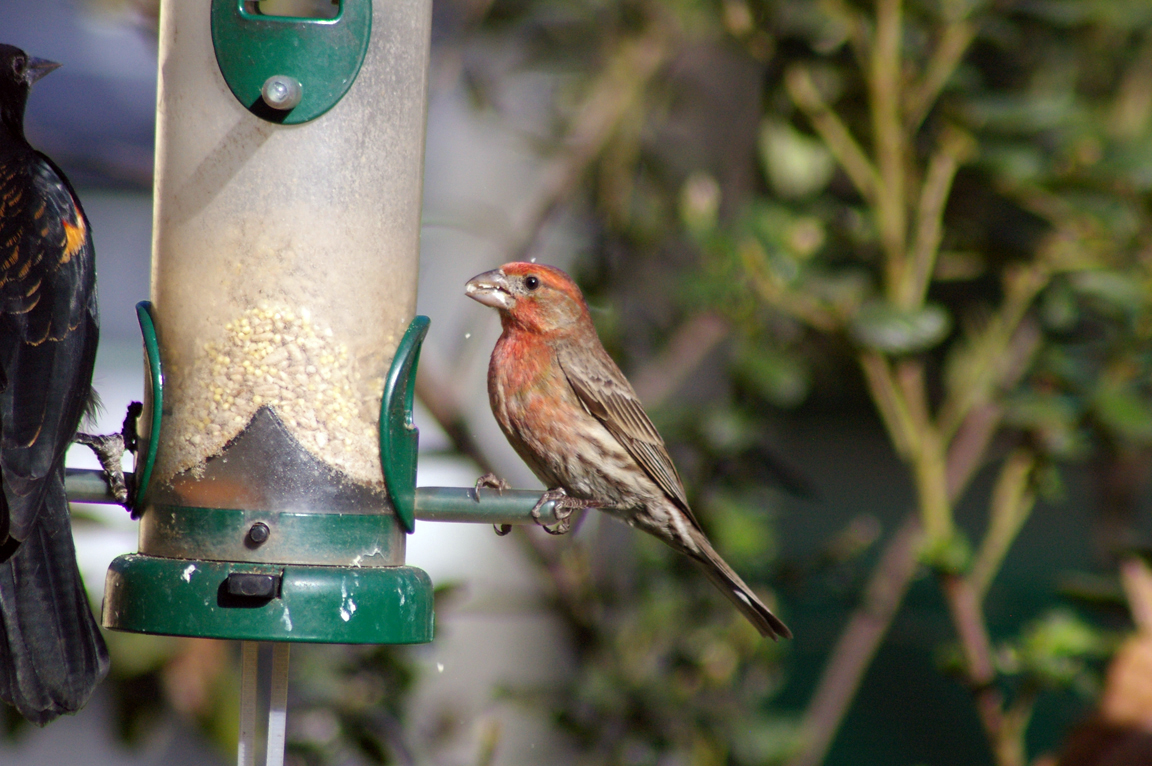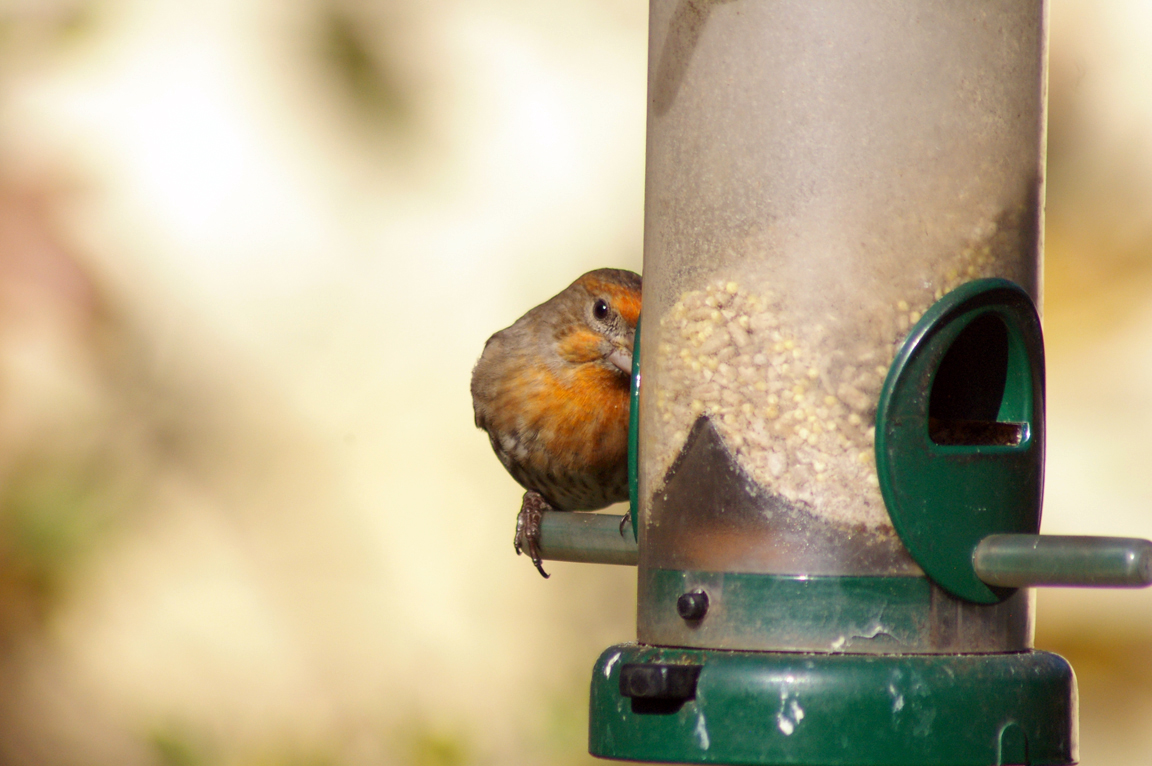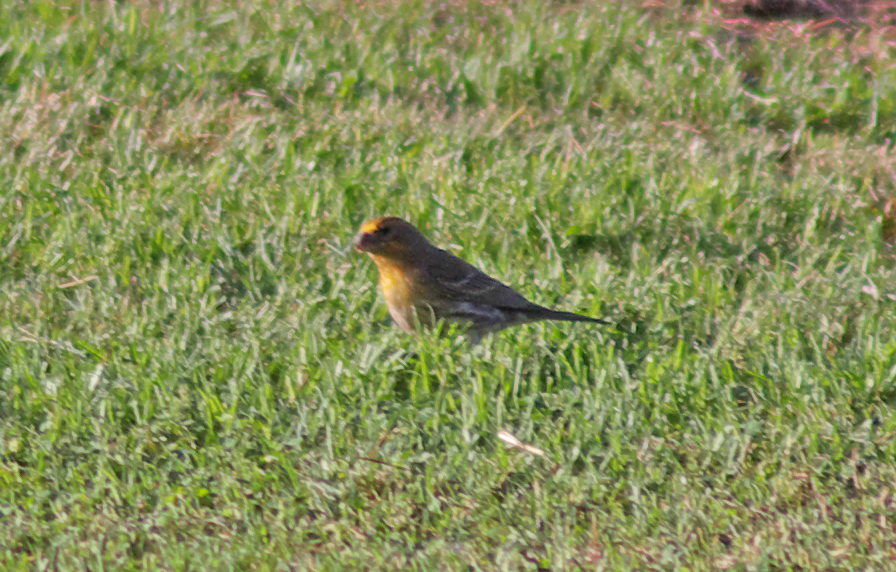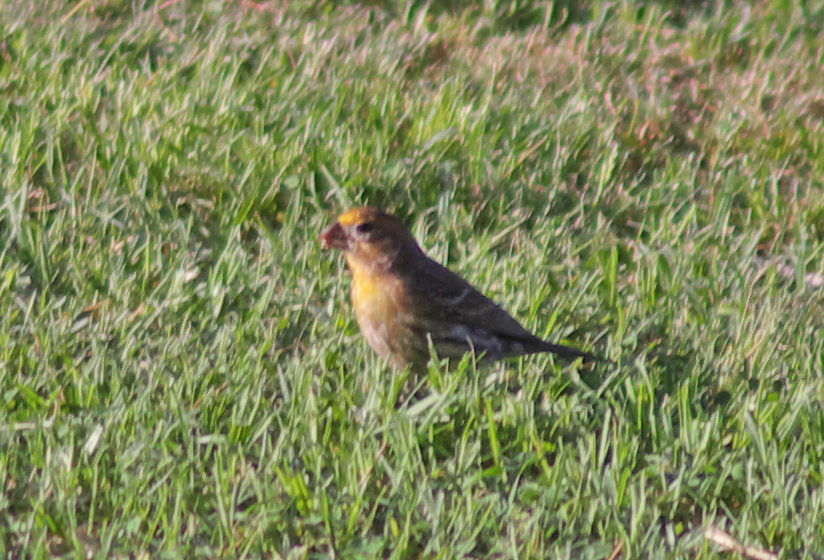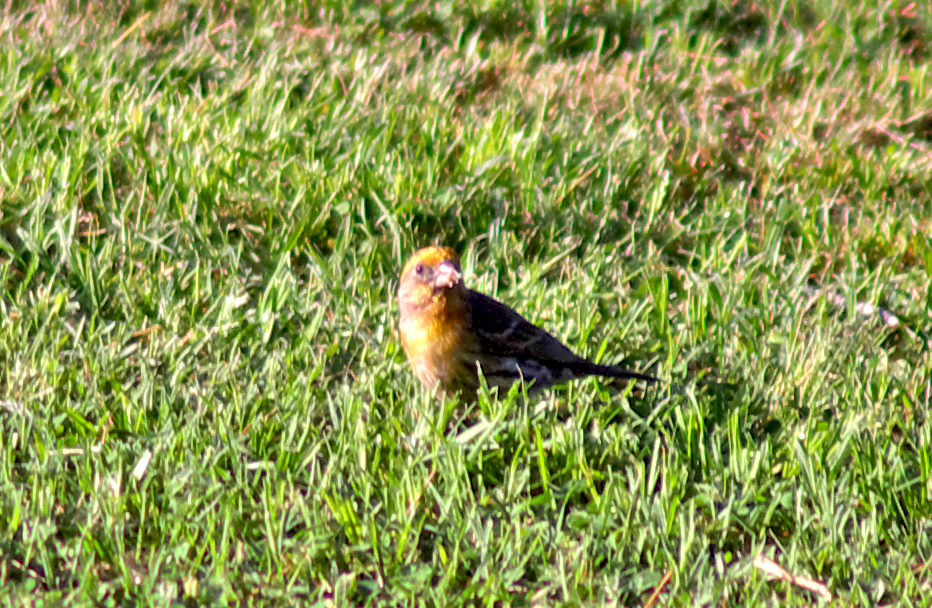|
|
|
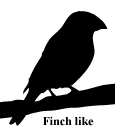 |
House Finch
|
| Carpodacus mexicanus | |
A bright red and brown-striped bird of the cities and suburbs, the House Finch comes readily to feeders. It also breeds in close association with people, and often chooses a hanging plant in which to put its nest.
Interesting Information
-
The House Finch was originally a bird of the southwestern United States and Mexico. In 1940 a small number of finches were turned loose on Long Island, New York, and they quickly started breeding. They spread across the entire eastern United States and southern Canada within the next 50 years.
-
The red or yellow color of a male House Finch comes from pigments that it gets in its food during molt. The more pigment in the food, the redder the male. Females prefer to mate with the reddest male they can find, perhaps assuring that they get a capable male who can find enough food to feed the nestlings.
-
When nestling House Finches defecate, the feces are contained in a membranous sac, as in most birds. The parents eat the fecal sacs of the nestlings for about the first five days. In most songbird species, when the parents stop eating the sacs, they carry the sacs away and dispose of them. But House Finch parents do not remove them, and the sacs accumulate around the rim of the nest.
Description
Adult Description
-
Size: 13-14 cm (5-6 in)
-
Wingspan: 20-25 cm (8-10 in)
-
Weight: 16-27 g (0.56-0.95 ounces)
-
Medium-sized finch.
-
Male bright red on head, chest, and rump; female brown and striped.
-
Bill short and thick, with rounded top edge.
-
Two thin white wingbars.
-
Tail with square tip.
-
Underparts streaked brown and white.
-
Eyes black.
-
Legs dark brown.
Sex Differences
Male red,
female grayish brown with stripes.
Male Crown, eyebrow
stripe, throat, chest, and rump bright red to
pale yellow. Flanks whitish with heavy brown
stripes. Back, wings, and tail brown. Female Grayish brown
overall, with blurry streaks on chest and sides.
Face all brown, with no eyestripe. Immature Juvenile
similar to female, but with more fluffy feathers
and more distinct wingbars.
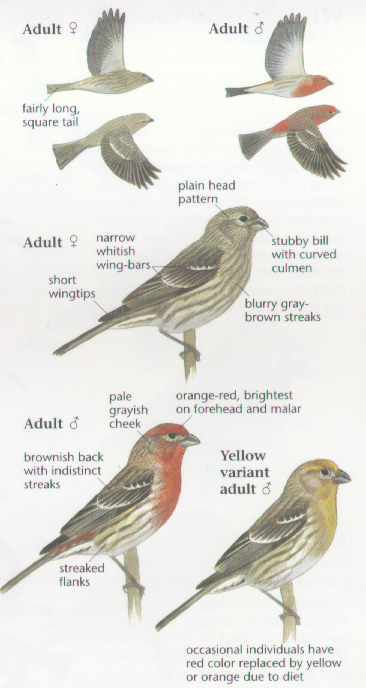
Photo taken from: The Sibley Field Guide by David Allen Sibley
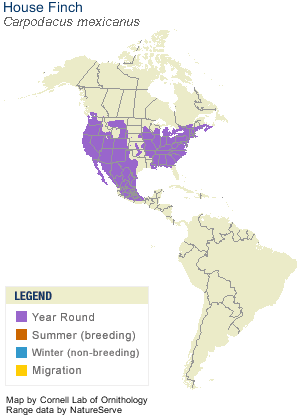
© 2003 Cornell Lab of Ornithology
|
Habitat |
|
In the East, found almost exclusively in urban and suburban habitats, especially in areas with buildings, lawn, and small conifers. In West, found around people, but also in desert, chaparral, oak savanna, riparian areas, and open coniferous forests. |
|
Behavior |
|
Forages in small flocks, usually in trees, but often on ground. Uses feeders extensively. |
|
Food |
|
Buds, seeds, and fruits. |
Taxonomy
| Kingdom: | Animalia |
| Phylum: | Chordata |
| Subphylum: | Vertebrata |
| Class: | Aves |
| Order: | Passeriformes |
| Family: | Fringillidae |
| Subfamily: | Carduelinae |
| Genus: | Carpodacus |
| Species: | Carpodacus mexicanus |
| Subspecies: | Carpodacus mexicanus amplus |
| Carpodacus mexicanus centralis | |
| Carpodacus mexicanus clementis | |
| Carpodacus mexicanus coccineus | |
| Carpodacus mexicanus frontalis | |
| Carpodacus mexicanus griscomi | |
| Carpodacus mexicanus mcgregori | |
| Carpodacus mexicanus mexicanus | |
| Carpodacus mexicanus potosinus | |
| Carpodacus mexicanus rhodopnus | |
| Carpodacus mexicanus roseipectus | |
| Carpodacus mexicanus ruberrimus |
Similar Species |
|
|
Bird Sound |
|
Song a hoarse warble that goes up and down rapidly. Call note a sharp "cheep." |
|
Eggs look like this |
|
Photo taken from: ARCTOS Collaborative Collection Management Solution |
